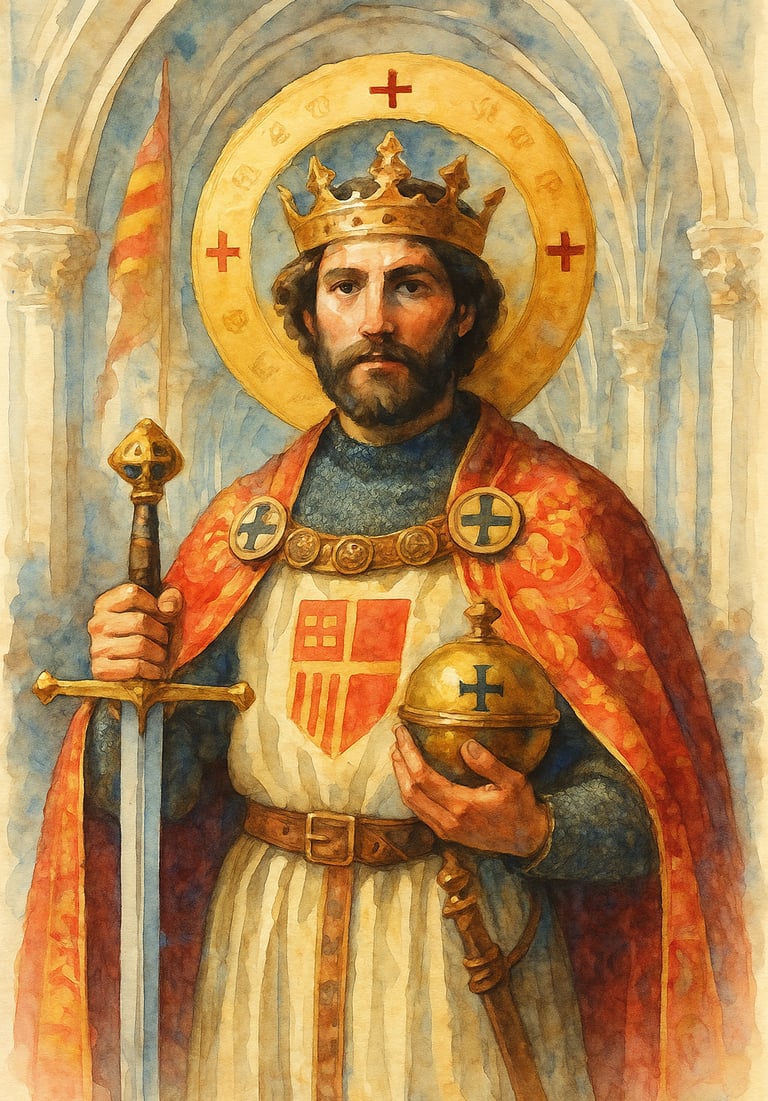St. Ferdinand III of Castilla
Patron of monarchs, peace, engineers, and large families
Halo & Light Studios
5/30/20252 min read


Click link for a reel of Daily Dose of Saints and Faithful Art:
https://youtube.com/shorts/ijIln_dXDmU?si=K7SUieFqOf1TAGVx
In an age where power often corrupted and war consumed the continent, St. Ferdinand III (1199–1252) emerged as a shining example of Christian kingship—a monarch who ruled not merely with might, but with mercy, prayer, and unwavering devotion to God.
Crowned King of Castilla at age 18, and later unifier of Castilla and León, Ferdinand carried the immense burden of leadership with a heart anchored in the Gospel. He viewed his office not as a platform for prestige, but as a mission entrusted to him by Christ, the King of Kings.
Warrior of the Cross, Builder of Peace
Ferdinand played a key role in the Reconquista, the Christian reclamation of Spain from Muslim rule. Yet, unlike many rulers of his era, Ferdinand approached conquest with humility and reverence. His campaigns were never driven by personal ambition but by a desire to restore Christian worship and order to his people. He reclaimed the great cities of Córdoba, Jaén, and Seville—offering protection to the innocent and showing mercy to the defeated, often sparing lives and granting fair terms.
But he was just as committed to the spiritual battle. Ferdinand built cathedrals, monasteries, and hospitals across his realm. He reformed laws, promoted education, and championed the arts—all while modeling personal holiness. He saw his role not just as king of a land, but as a shepherd of souls.
A Saintly Father and Humble Penitent
Despite wielding royal authority, Ferdinand lived as a humble servant of God. Beneath his royal robes, he wore a hairshirt—a sign of penance and self-mortification. He was often seen weeping in prayer, and he never failed to hear daily Mass, even while leading armies.
A devoted husband and father to thirteen children, Ferdinand raised his family in the faith, encouraging each child to embrace a life of holiness and service. Several of his children went on to serve the Church and the kingdom with distinction—including Queen Eleanor of England and King Alfonso X, who preserved and promoted his father's legacy.
At his death in 1252, he asked to be laid on the ground as a beggar, confessing his sins before God and dying in the grace of the sacraments. When his tomb was later opened, his body was found incorrupt, a visible sign of the hidden sanctity he had lived with all his life.
He was canonized in 1671 by Pope Clement X, becoming a model for Catholic rulers and all who hold earthly power.
What St. Ferdinand III Teaches Us Today
In a world that too often separates faith from public life, St. Ferdinand III reminds us:
Power is a responsibility, not a privilege.
Holiness is possible, even in high office.
Mercy and justice can—and must—walk hand in hand.
Family life and governance are not at odds, but mutually enriching.
He is the patron of monarchs, engineers, and large families not only because of what he did—but because of who he was: a king on earth who bowed before the King of Heaven.
